If single malt whisky was a person’s voice it would be Neil Gaiman narrating The Graveyard Book, whispering so close into the mike with his velvety voice that you feel his deep baritone in your bones like loud bass.
It was Neil Gaiman whose tantalizing interview on The Tim Ferris Podcast lured me into trying two things that completely changed my creative process:
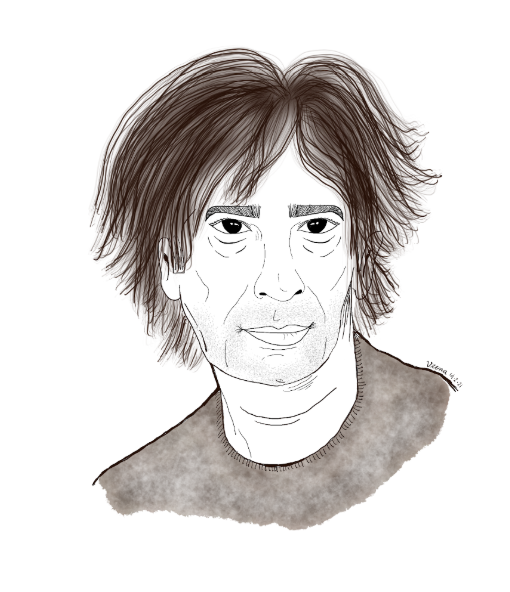
Writing with Fountain Pens
If you are anywhere as old as I am, you would associate fountain pens with large ink stains on your fingers and being chastised by school teachers into a pleasant handwriting and having to earn the freedom to write with any pen you choose. But I found there was more to it.
When you use a fountain pen, there is something very sensual about the whole act of writing, that cannot be replicated by the thumbing on a touch screen or the clickety clacks of the keyboard. When you write, your thoughts slow down, going deeper instead of faster and the word itself glistens with wet ink. The thicker the line, the more visceral and satisfying this way of writing feels.
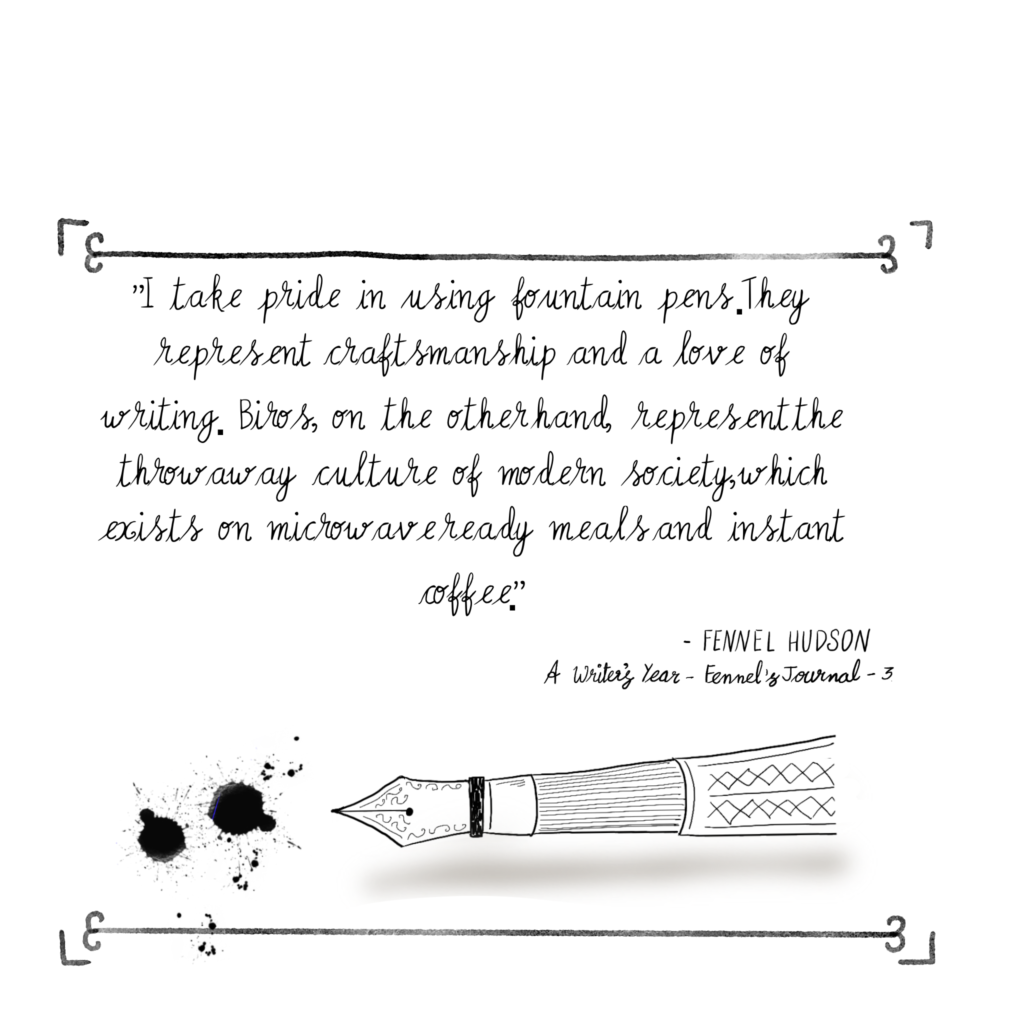
Journaling with a fountain pen has been a major tool for me to deal with these weird times we are in right now, all of us across the world struggling with the same unmet human needs. Playing with different coloured inks has also been a wonderful way to bring my own self to the whole process.
If you feel sketchy about the basics of using a fountain pen: JetPens on Youtube have some great videos on the basics:
How to Write with a Fountain Pen
How to Choose a Fountain Pen Nib
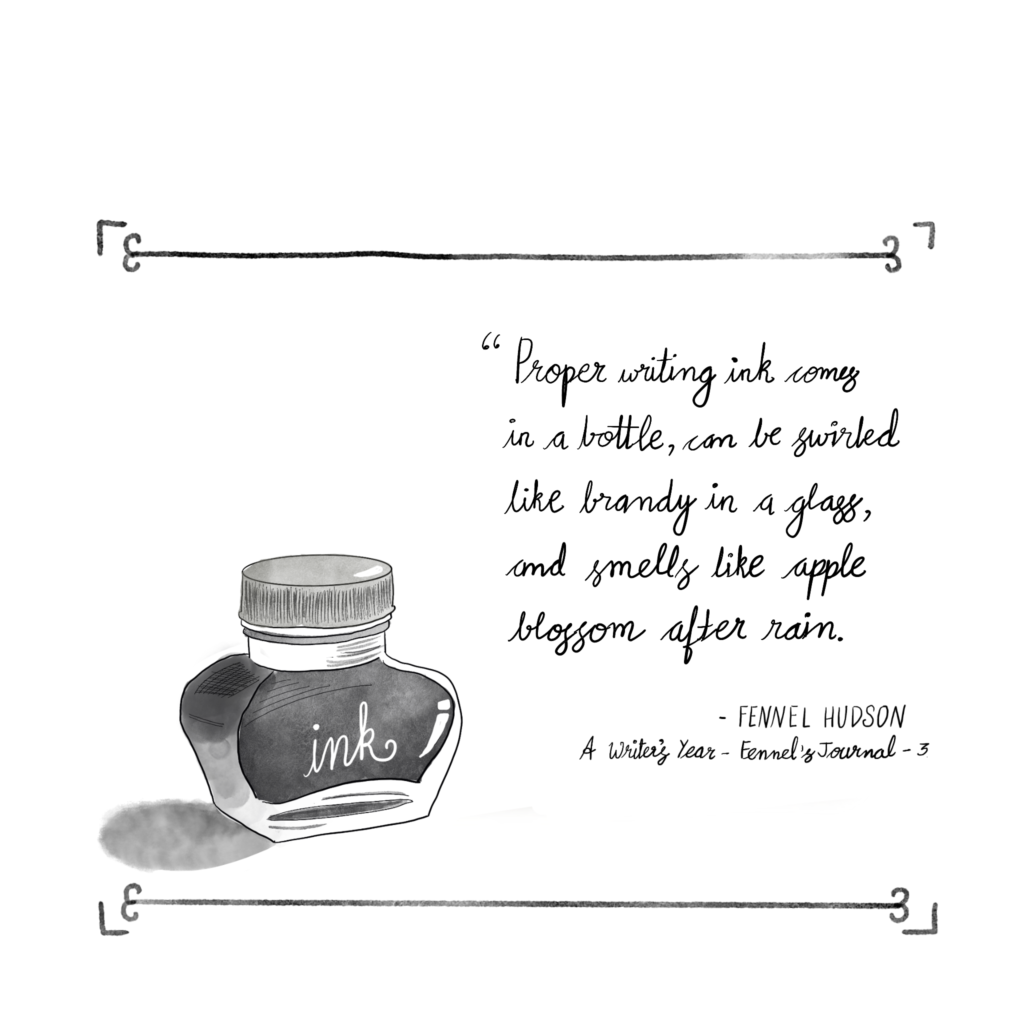
Writing by hand
Neil Gaiman also familiarized me with the well-known secret that I was oblivious to: writing first drafts longhand.
While I used this technique for my creative writing, I also realized this process works for any and all kinds of conceptualizations: eg – coming up with a new idea at work, writing a social media post, working through a problem etc. It got me curious about the science behind writing by hand and I found brain benefits ranging from boosting creativity, comprehension, focus, language skills, memory, relief for mental health issues all the way to slowing down mental aging that have been documented! So the next time you feel stuck, in life or otherwise, write your way out of it.
My two fingers on a typewriter have never connected with my brain. My hand on a pen does. A fountain pen, of course. Ball-point pens are only good for filling out forms on a plane.
– Graham Greene
Another route into the vintagey world of fountain pens and inks is the Skillshare class romantically titled : “Postcards From Here: Playing with Ink” taught by the delightful Dylan Mierzwinski , my favourite tutor on Skillshare . Even if you do not have a membership, I urge you to do the free trial for this gorgeously slow, real and intense dive into inks. Thanks to this class, I don’t look at my bottle of ink the same way anymore.
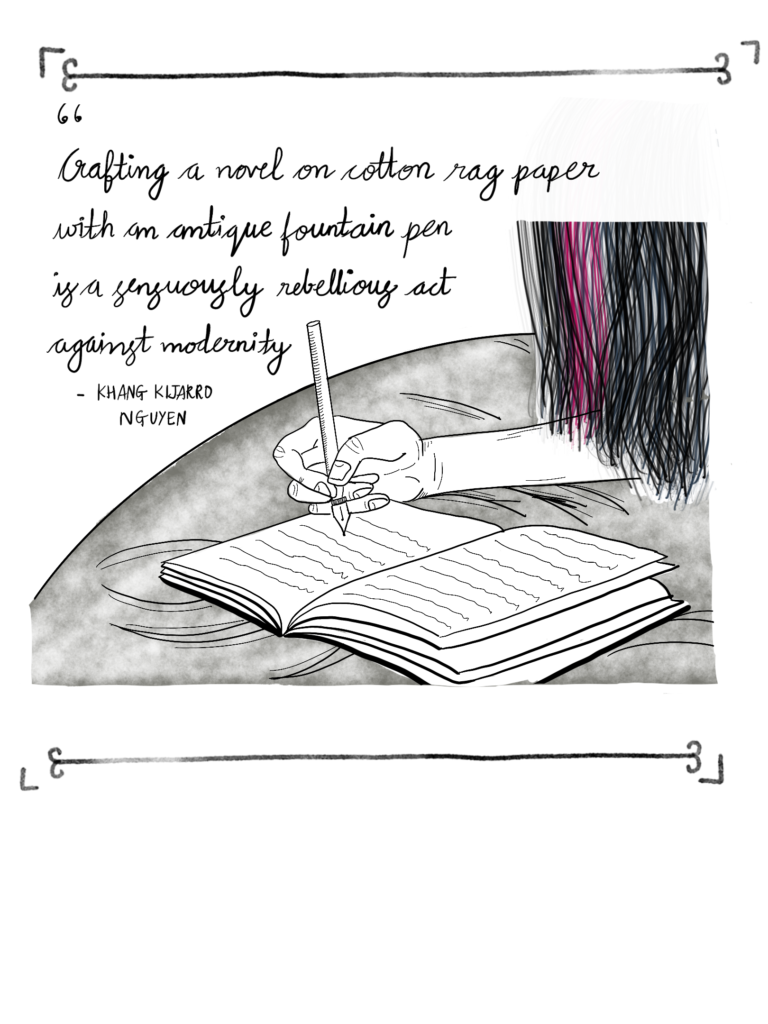
Many people swear by the Morning Pages practice as recommended in The Artists’ Way by Julia Cameron. I am not a stickler for these exact rules she spells out (3 full pages, first thing in the morning, every single day) but I too swear by what I have come to call ‘longform’ journaling (as separate from my bullet journaling practice). A few pages on most days has done wonders for my mental clarity, creativity and working through difficult emotions.
Another fun thing to try is to use your handwriting to create a font using Calligraphr. The final appeal to writing things by hand and allowing the process to slow down life comes from the uniquely beautiful handwriting that comes from writing longhand that a typed down word document just does not capture.
“The Digital Age promises to amplify their being—YouTube’s original motto was “Broadcast Yourself”—but, in truth, it only delivers a horde of users with identical devices echoing one another in cyberspace.”
― Mark Bauerlein, Plough Quarterly No. 15 – Staying Human: The Tech Issue
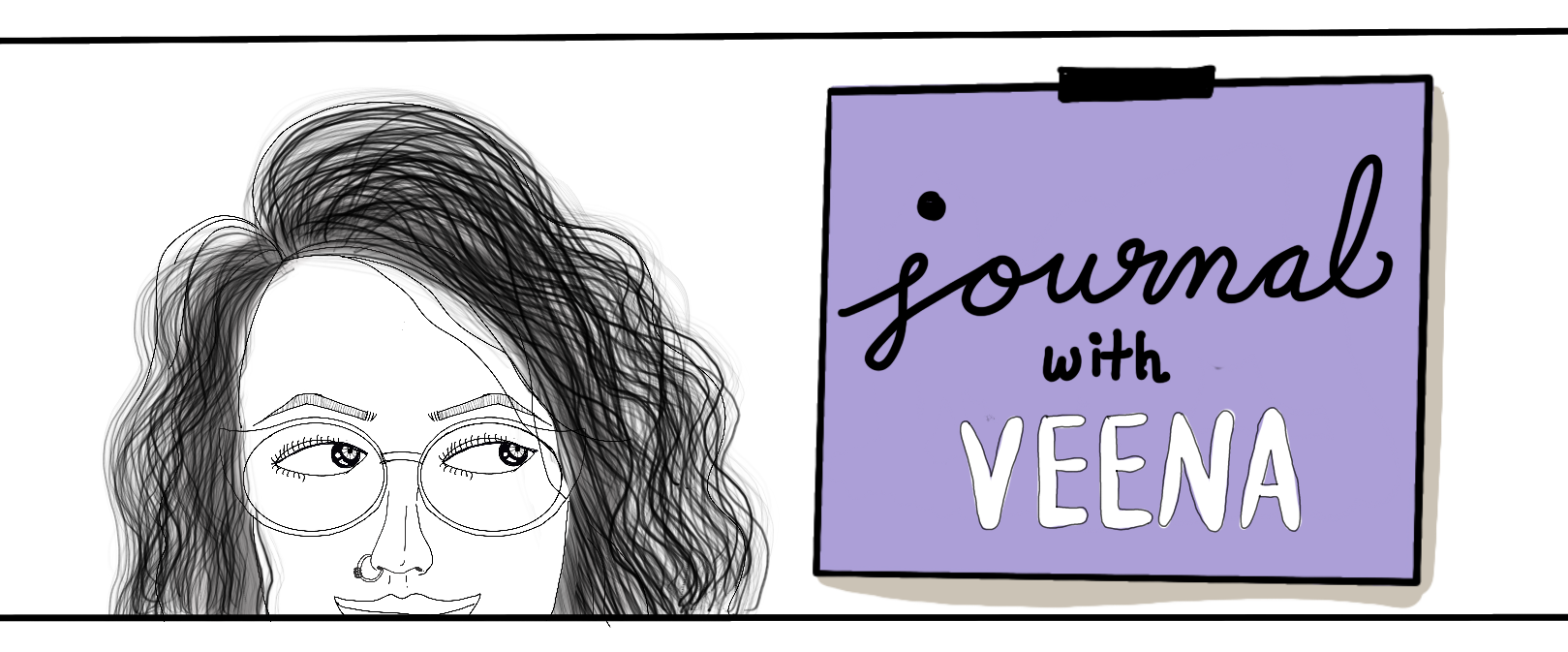
Awesome https://lc.cx/xjXBQT
Very good https://t.ly/tndaA